All grown up
Today I have a fun insect story for you. Last fall my (very thoughtful) mother, gave me a piece of wood that had beetle larvae in it. I have not worked with or really studied wood boring beetles so I wanted to get a look at them. I could clearly see several holes where beetle larva could be living.
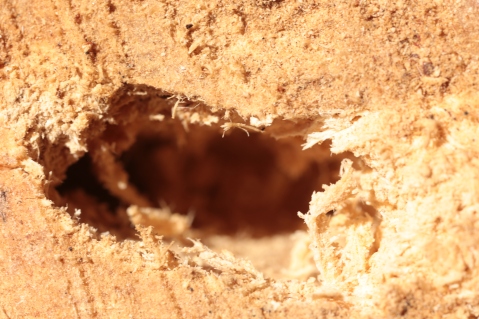
See the sawdust like material around the hole? That is wood the insect has chewed up. They like to fill in the hole with that stuff. Since it was likely there was a larva in the hole, I gently split the log around the hole. And, yes, indeed there was a giant larva in there!
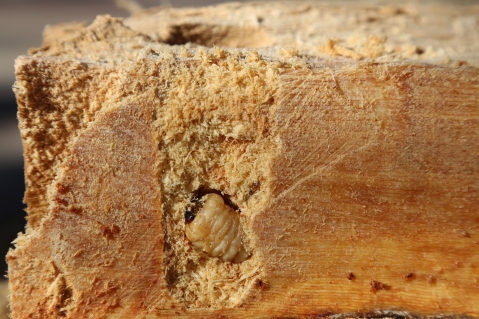
Seriously, it was really big.

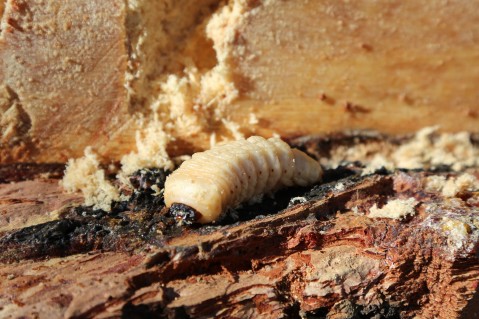
I thought at the time that this was probably a longhorned beetle larva. The guys are sometimes called roundheaded wood borers because they borrow into wood. They generally attack weak, dying, or newly dead trees. The female will chew a slit in the bark and deposit the eggs. Many conifers and some hardwoods are attacked by this type of beetle, but they are not really a forest problem because the stick to dead and dying wood. They can cause problems with newly cut wood that is being used for building or other things. As you can see from the picture, they cause significant structural damage to the wood. I mean look at those chompers!
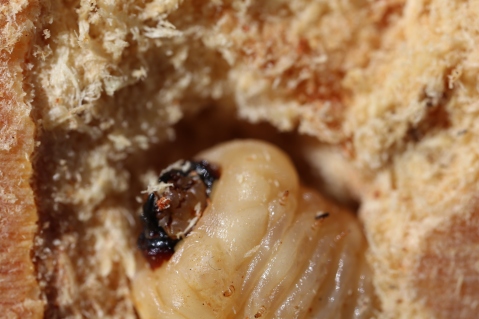
Asian longhorned beetles are the best known pest of this beetle group. It is not known to be in my area, but I did keep the wood quarantined just in case. In fact what I did was wrap the wood in plastic and put it in a box in my shed. Then I waited.
I’ve been checking the bag regularly for the last couple weeks as spring has really set in. Then this week, there was a new addition. I opened the bag to find this guy.
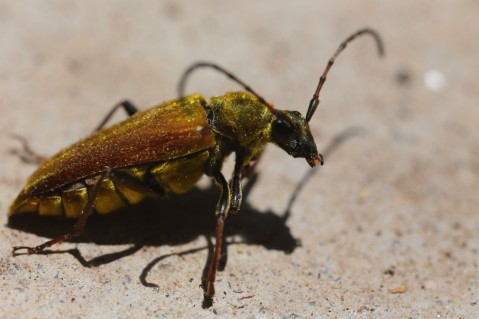
This was not what I was expecting. I thought I’d be finding a pine sawyer (https://en.wikipedia.org/wiki/Monochamus). With a little investigation, I think that this is a yellow velvet longhorned beetle. There is not a lot of research on them, but like other flower beetles they are known to visit flowers to feed on pollen and nectar (not damaging to the flowers). It is quite a pretty beetle. So yellow!
It is possible that this adult beetle came from a different larva then the one I found so I am going to keep a close eye on the log and do some research about yellow velvet longhorned beetles!

Oh, wow – that is neat! I love the pictures. I wouldn’t want the creature eating any of my stuff however, I do find them fascinating. Thanks for sharing!
LikeLike